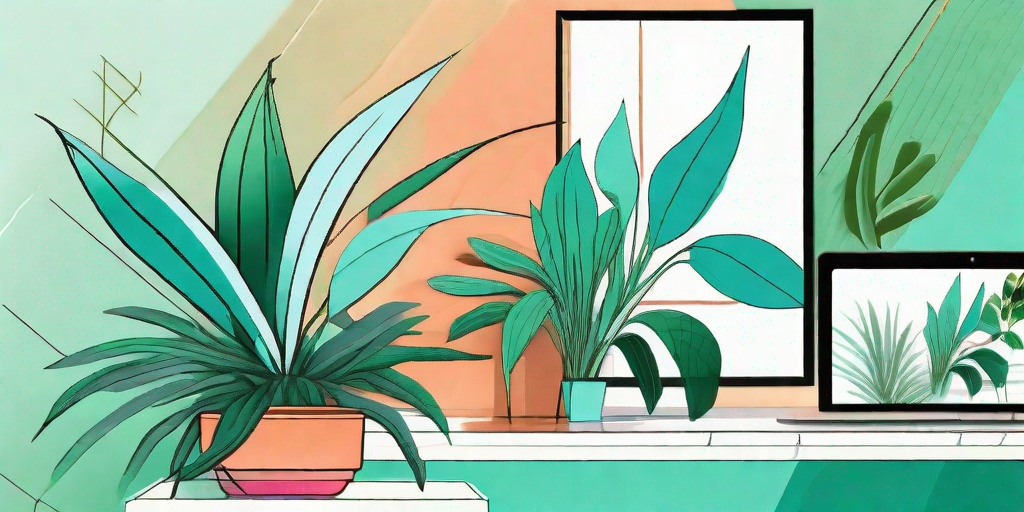
Welcome to the lush, vibrant world of Ti plants! These tropical treasures, also known as Cordyline fruticosa, are a feast for the eyes with their strikingly colorful foliage. They are a popular choice for indoor and outdoor gardening, but they can be a bit finicky. Fear not, plant parents! With a pinch of patience, a dash of dedication, and a sprinkle of our ti-rrific tips, your Ti plant will be thriving in no time.
Getting to Know Your Ti Plant
Origin and Characteristics
The Ti plant, pronounced "tee," is native to Southeast Asia and the Pacific islands. It's a perennial plant that can grow up to 10 feet tall in the wild but usually stays around 3 to 6 feet tall when grown indoors. The leaves are its most striking feature, long and glossy, ranging in color from green to red, purple, and even black. It's like having a rainbow in your living room!
Historically, the Ti plant has been used for medicinal purposes and even as a food source. But these days, it's mostly admired for its ornamental beauty. It's a real showstopper in any garden or home decor.
Symbolism
Did you know that the Ti plant is steeped in cultural significance? In Hawaiian culture, it's considered a symbol of divine power and protection. It's often planted around homes to ward off evil spirits. So, not only is it a gorgeous addition to your home, but it might just keep the boogeyman away too!
In Chinese culture, the Ti plant is associated with good fortune. It's often given as a gift during the Chinese New Year. So, if you're looking to attract some luck, a Ti plant might be just the ticket.
Caring for Your Ti Plant
Light Requirements
Like most tropical plants, the Ti plant loves bright, indirect light. It's not a fan of direct sunlight, which can scorch its beautiful leaves. So, place it near a window with filtered light, or in a spot that gets plenty of morning sun and afternoon shade.
If your Ti plant isn't getting enough light, it will let you know. Its leaves may start to lose their vibrant color, and it might become leggy, stretching towards the light. On the other hand, if it's getting too much light, the leaves may start to look bleached or burnt.
Watering and Humidity
The Ti plant likes to stay moist but not soggy. Overwatering can lead to root rot, which is a surefire way to send your plant to the big garden in the sky. So, water it thoroughly, then let the top inch of soil dry out before watering again.
Humidity is another crucial factor. The Ti plant thrives in a humid environment, so consider placing it on a pebble tray filled with water, or mist it regularly. If the air in your home is too dry, the leaf tips may start to brown.
Soil and Fertilizer
The Ti plant prefers a well-draining soil mix, such as a peat-based mix with perlite to improve drainage. It's also a heavy feeder, so a slow-release fertilizer applied in the growing season (spring and summer) will keep it happy and healthy.
Remember, it's better to under-fertilize than over-fertilize. Too much fertilizer can cause salt buildup in the soil, which can damage the plant's roots. If the leaves start to brown or curl, it might be a sign of over-fertilization.
Common Problems and Solutions
Yellowing Leaves
If the leaves of your Ti plant start to yellow, it could be a sign of overwatering. Check the soil to see if it's waterlogged, and adjust your watering schedule accordingly. If the problem persists, you might need to repot the plant in fresh, well-draining soil.
Brown Leaf Tips
Brown leaf tips are usually a sign of low humidity or underwatering. Try increasing the humidity around the plant, and make sure it's getting enough water. But remember, balance is key! Too much water can be just as harmful as too little.
Frequently Asked Questions
Why are the leaves on my Ti plant losing their color?
If your Ti plant's leaves are losing their color, it might not be getting enough light. Try moving it to a brighter location, but avoid direct sunlight which can scorch the leaves.
Can I grow a Ti plant from a cutting?
Absolutely! Ti plants are relatively easy to propagate from stem cuttings. Just cut a stem section, let it dry for a day or two, then plant it in a pot with well-draining soil. Keep the soil moist, and with a bit of luck, you'll have a new Ti plant in no time.
Is the Ti plant toxic to pets?
Yes, unfortunately, the Ti plant is toxic to dogs and cats. If ingested, it can cause vomiting, drooling, and difficulty swallowing. So, it's best to keep it out of reach of your furry friends.
Conclusion
There you have it, folks! With these ti-rrific tips, your Ti plant will be the envy of all your plant-loving friends. Remember, the key to a thriving Ti plant is balance: not too much water, not too much light, and just the right amount of care and attention. Happy gardening!















